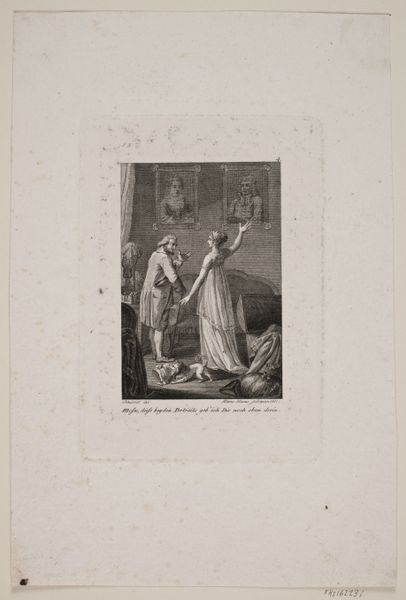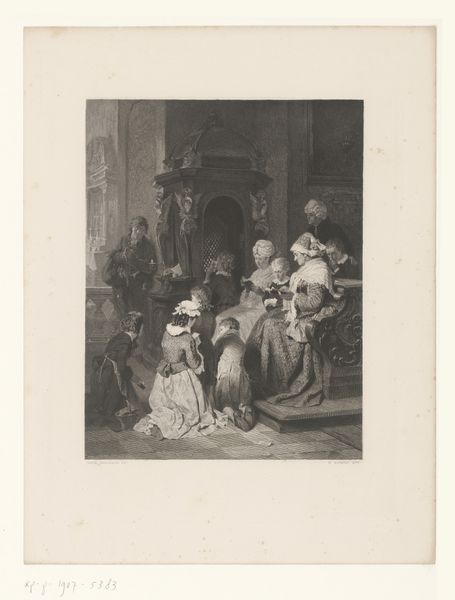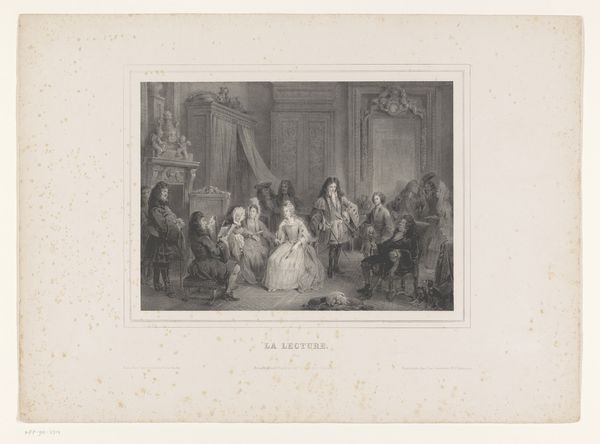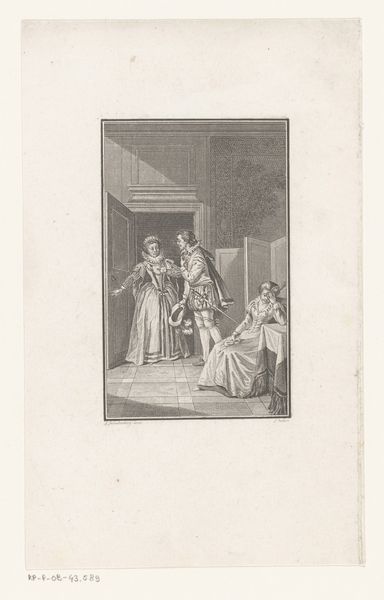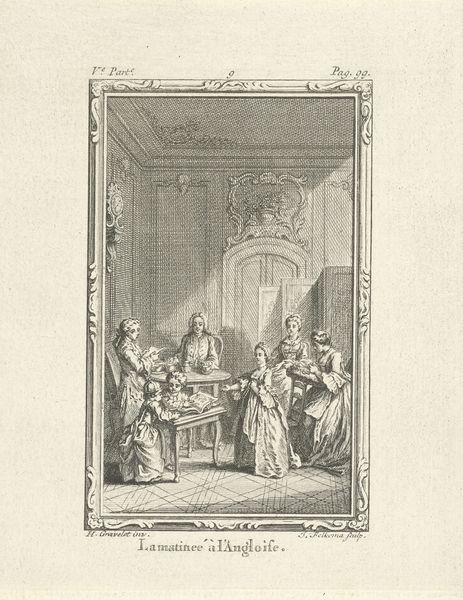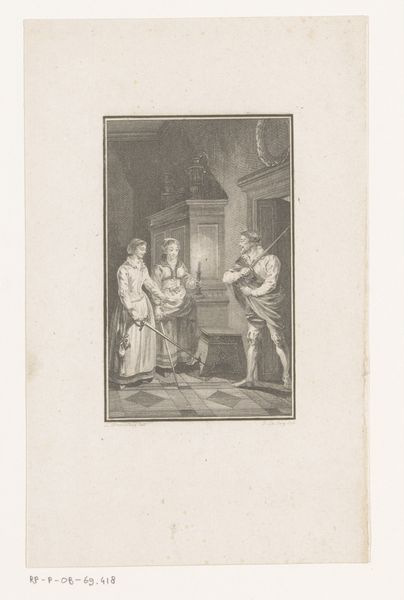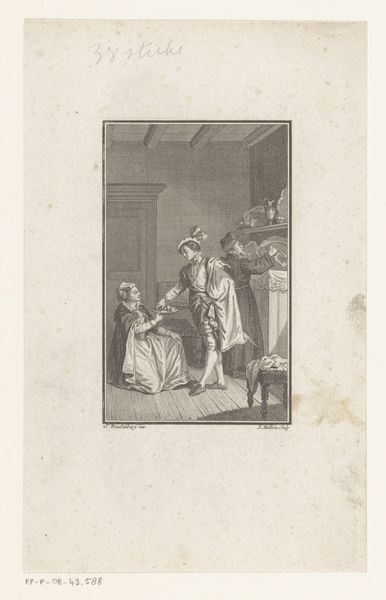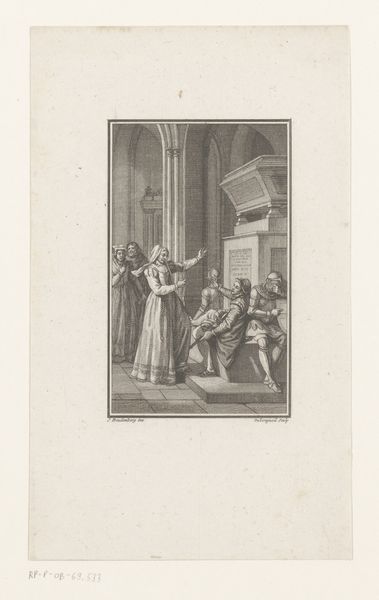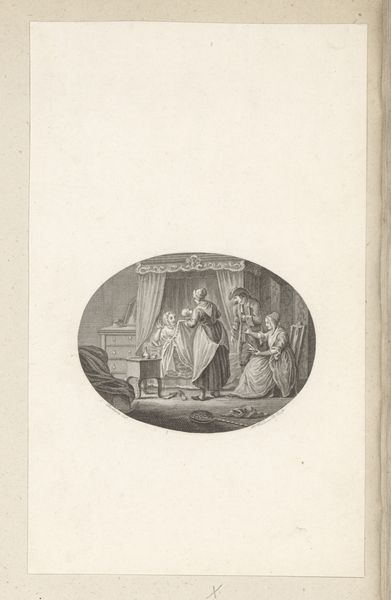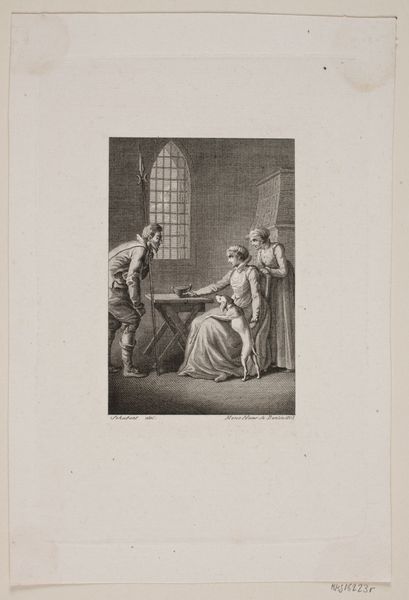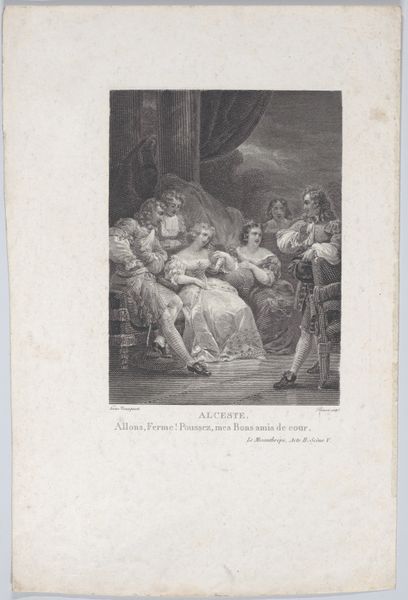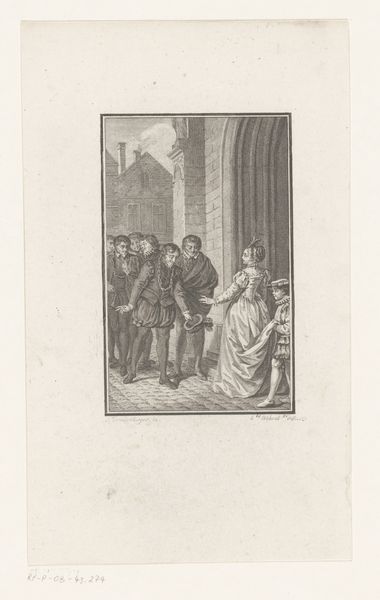
drawing, print, engraving
#
portrait
#
drawing
#
narrative-art
# print
#
figuration
#
line
#
genre-painting
#
history-painting
#
academic-art
#
engraving
Dimensions: height 367 mm, width 273 mm
Copyright: Rijks Museum: Open Domain
Curator: This engraving, dating from between 1843 and 1876, is entitled "Muziekoefening", or "Musical Exercise," by Carel Christiaan Antony Last, currently residing here at the Rijksmuseum. What do you make of it? Editor: Immediately, I notice the emphasis on line and the texture it creates. Look at the fabrics – how much can be communicated about material with the skilled use of line alone! There's also a theatrical staging. Curator: Absolutely. We see a glimpse into a domestic sphere, meticulously constructed. This piece clearly draws on historical genre painting; think of similar works popularized throughout Europe that provided glimpses into idealized bourgeois lives. What is emphasized and, just as importantly, what's omitted, provides key social commentary. Editor: Agreed, and notice how the figures interact. The young woman’s position, slightly distanced from the seated musician at the harpsichord, along with her scattered music pages suggest perhaps, a performance anxiety or lack of practice. The gaze and presence of others suggests an interplay of judgment and surveillance, where making music in the domestic space is work, performance, and production all at once. Curator: That tension is palpable. Music in these settings served both entertainment and status demonstration. Artistic skill—its display and mastery—held immense social currency, defining access and delineating societal echelons. This performance underscores power dynamics prevalent at that time. Editor: And the labour required! It took real skill, but also practice to produce the copper plate used to print multiple versions of this image, to say nothing of the labour required to mine the metal for it. What gets consumed is the idea or aesthetic rather than engagement with manual labor. Curator: Precisely! The print form makes it a commodity accessible to a wider audience. But access to the 'experience' remained class-bound, reinforcing distinctions within Dutch society, a microcosm of Europe at that time. Editor: Looking closely reveals how much is implied but unseen, hidden behind that pristine surface and performance of skill. Curator: Exactly. So, while beautiful on its surface, this print reflects how social standing intertwined deeply with access to education and aesthetic appreciation. It’s far more than a simple 'musical exercise.'
Comments
No comments
Be the first to comment and join the conversation on the ultimate creative platform.
